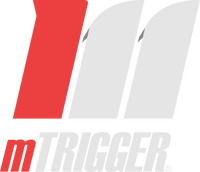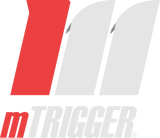Muscle Activation During the Volleyball Serve
Shoulder injuries are the third most common injury in volleyball players.(1) The majority of these shoulder issues are a result of overuse.(2)
The serve in particular, requires a high amount of muscle activation and dynamic stabilization from the glenohumeral joint (GHJ) in order to achieve proper ball placement during the motion.(3) Imbalances in the stabilizing muscles of the shoulder can increase the likelihood of injury in adolescent volleyball players.(3) The volleyball serve can be broken down into 5 phases to help understand the motion.(1)
The volleyball serve can be broken down into 5 phases to help understand the motion.(1)
1. Wind up
2. Cocking
3. Acceleration
4. Deceleration
5. Follow through
During the volleyball serve, the four rotator cuff muscles compress the humeral head into the joint and eccentrically control the shoulder during deceleration and follow through.(3) Therefore, appropriate strength of the rotator cuff is essential to helping prevent injuries in volleyball players.(3)
By using available EMG studies, athletic trainers, coaches, and physical therapists can ascertain the expected muscle activation patterns during a volleyball serve and subsequently provide appropriate treatment for their athletes.(4) EMG data demonstrates which muscles are active during which phases of the volleyball serve. It also helps establish muscles undergoing concentric vs eccentric contraction.(4)
Here is what we know from these studies. During the cocking phase, muscle activity of the infraspinatus increases to externally rotate the humerus and remains high through the acceleration and deceleration phases.(1) During the deceleration phase, the infraspinatus is responsible for providing a crucial compressive and stabilizing force to the GHJ.(5)
Activity, in the teres minor quickly rises during the cocking phase before rising further during the acceleration phase then slowly decreasing during the deceleration and follow through phases.(1) The teres minor provides a posterior restraint to anterior subluxation of the GHJ during the serve.(1)
As the latissimus dorsi and pectoralis muscles work to create power by internally rotating and adducting the shoulder, peak muscle activity is observed in these muscles during the acceleration phase.(1,6) Following ball contact, the lats will help to decelerate the arm.(1)
These studies demonstrate the role of the lat, teres, and infraspinatus during the serving motion and indicate the need to focus on their role during recovery and rehabilitation. Standard exercises can serve well here, but the primary objective must be proper form and correct muscle activation. Athletes simply going through the motions will not gain the same benefit from rotator cuff and scapular stabilization exercises. The use of mTrigger biofeedback here guarantees volleyball players are targeting the appropriate muscles, maximizing every rep, and getting the most out of their training.
In this video example, we see the athlete focusing on the eccentric component of the exercise trying to keep her lats firing.
Clinical Application
During the technically challenging volleyball serve, proper body mechanics are critical for optimizing the transfer of energy from the lower body to the upper body.(6) The latissimus dorsi plays a big roll in this. Given its attachment spanning the posterior shoulder and back, the lat transfers energy between the core and the arm. Proper lat activation is important for obtaining ideal power during the serve as decreased lat activation can overload the rotator cuff.
By using mTrigger biofeedback volleyball players can see their muscle engagement and movement pattern in real time. This ensures they are getting the proper timing and muscle activation patterns out of training. Working on lat activation exercises can assist in the transfer of this skill from rehab to the court. Here are a few examples.
Aside from muscle weakness and poor technique, repeated serves can also lead to muscle fatigue and subsequent changes in posterior shoulder and rotator cuff muscle activation.(5) Following 30 min of repetitive serving, volleyball players demonstrated a notable decrease in the muscle activation of the infraspinatus and lower trap.(5) Using EMG to shed light on the effect repetitive serving has on the posterior shoulder helps to guide volleyball players and rehab professionals in understanding how to optimize training and injury prevention programs.
For instance, it is normal for the shoulder internal rotators to be stronger than the external rotators. In fact, an ER/IR ratio of 2/3 is considered normal, however, Ellenbecker and Davies, recommend increasing this ratio to closer to ¾ for overhead athletes including volleyball players.(7) This means improving external rotation strength is critical for increasing this ratio to an acceptable level.(7) Exercises such as side lying external rotation (and so many more) can assist in this matter.
Summary
The volleyball serve is a repetitive motion that is very demanding on the rotator cuff and posterior shoulder. EMG data on the volleyball serve sheds light on the impact of the motion and allows for rehab programs to be developed that optimize training and minimize overuse injuries.(5) mTrigger biofeedback can be used for targeted exercise training to help improve the activation of the muscles essential to protecting the shoulder and producing fast accurate serves on the court.
References
1. Rokito AS, Jobe FW, Pink MM, Perry J, Brault J. Electromyographic analysis of shoulder function during the volleyball serve and spike. J Shoulder Elbow Surg. 1998;7(3):256-263. doi:10.1016/S1058-2746(98)90054-4
2. Reeser JC, Fleisig GS, Bolt B, Ruan M. Upper Limb Biomechanics During the Volleyball Serve and Spike. Sports Health. 2010;2(5):368-374. doi:10.1177/1941738110374624
3. Stickley CD, Hetzler RK, Freemyer BG, Kimura IF. Isokinetic peak torque ratios and shoulder injury history in adolescent female volleyball athletes. J Athl Train. 2008;43(6):571-577. doi:10.4085/1062-6050-43.6.571
4. Escamilla RF, Andrews JR. Shoulder muscle recruitment patterns and related biomechanics during upper extremity sports. Sports Medicine. 2009;39(7):569-590. doi:10.2165/00007256-200939070-00004
5. Khal KM, Moore SD, Pryor JL, Singh B. CHANGES IN INFRASPINATUS AND LOWER TRAPEZIUS ACTIVATION IN VOLLEYBALL PLAYERS FOLLOWING REPETITIVE SERVES. Int J Sports Phys Ther. 2020;15(2):196. doi:10.26603/ijspt20200196
6. Seroyer ST, Nho SJ, Bach BR, Bush-Joseph CA, Nicholson GP, Romeo AA. The kinetic chain in overhand pitching: Its potential role for performance enhancement and injury prevention. Sports Health. 2010;2(2):135-146. doi:10.1177/1941738110362656
7. Hadzic V, Sattler T, Veselko M, Markovic G, Dervisevic E. Strength asymmetry of the shoulders in elite volleyball players. J Athl Train. 2014;49(3):338-344. doi:10.4085/1062-6050-49.2.05
Images
1. http://volleyballdynamics3531.blogspot.com/2016/06/major-question.html
2. https://www.javelinsportsinc.com/posts/proper-overhand-serve-technique-in-volleyball
Athletic Trainer's Guide to Biofeedback
|
Biofeedback Case Examples with Dr. George Davies
|


Leave a comment